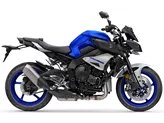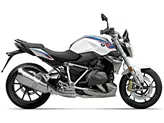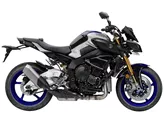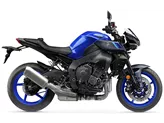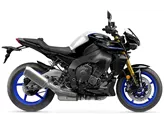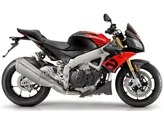Yamaha MT-10 2016 vs. BMW S 1000 R 2014

Yamaha MT-10 2016

BMW S 1000 R 2014
Overview - Yamaha MT-10 2016 vs BMW S 1000 R 2014
The Yamaha MT-10 2016 and the BMW S 1000 R 2014 are both naked bikes with similar engine specifications. They both have an in-line, 4-cylinder engine with a displacement of around 1000cc. The engine power is also the same at 160 HP for both bikes. However, the Yamaha MT-10 has a torque of 111 Nm, while the BMW S 1000 R has a slightly higher torque of 112 Nm.
In terms of suspension, both bikes have upside-down telescopic forks at the front and swing arm suspension at the rear. They also both have a monoshock shock absorber. The chassis of both bikes is made of aluminum, but the Yamaha MT-10 has a Deltabox frame, while the BMW S 1000 R has a Twin Tube frame.

Yamaha MT-10 2016
When it comes to braking, both bikes have double disk brakes at the front. The Yamaha MT-10 comes with advanced rider assistance systems such as ABS and traction control, while the BMW S 1000 R has dynamic suspension as an additional advanced rider assistance system.
In terms of dimensions and weights, both bikes have the same front and rear tire width and diameter. The wheelbase of the Yamaha MT-10 is slightly shorter at 1400 mm compared to the 1439 mm of the BMW S 1000 R. The seat height of the Yamaha MT-10 is slightly higher at 825 mm compared to the 814 mm of the BMW S 1000 R. The kerb weight of the Yamaha MT-10 is slightly heavier at 210 kg compared to the 207 kg of the BMW S 1000 R. Both bikes have a fuel tank capacity of around 17 liters.
In terms of strengths, the Yamaha MT-10 is praised for its CP4 engine, which gives it a strong character and an unmistakable sound. It is also highly agile and offers high-speed stability. The brakes are strong and reliable. On the other hand, the BMW S 1000 R is known for its sporty chassis and extreme power and performance. It also offers very good electronic helpers and has a terrific price/performance ratio. It is fast and comfortable on both the racetrack and country roads.

BMW S 1000 R 2014
However, the Yamaha MT-10 has some weaknesses, including poor comfort, limited wind protection, and a hard fit. On the other hand, the BMW S 1000 R has a slightly rough engine running and the dynamic suspension is rather on the "hard" side overall. The seat is relatively high, and the design is a matter of taste.
In conclusion, both the Yamaha MT-10 2016 and the BMW S 1000 R 2014 are powerful naked bikes with similar engine specifications. They have their own strengths and weaknesses, and the choice between the two ultimately depends on the rider's preferences and priorities.
Technical Specifications Yamaha MT-10 2016 compared to BMW S 1000 R 2014
Pros and Cons in comparison
Pros and Cons in comparison
Yamaha MT-10 2016

The short and stocky MT-10 is the furthest away from the R1 superbike of the renowned power naked bikes, both in terms of looks and chassis, but the heart of the MT-10 is directly descended from the racetrack weapon and fascinates with a uniquely raw sound and power from below thanks to the typical crank pin offset, which, with a modified firing order, ensures this unique character. The resulting 160 hp therefore only seem a little weak on paper compared to the more than 200 hp of the R1, in reality the MT-10 also ignites incredible fireworks. The suspension would probably be too soft for the race track, but it is just right for a country road fight, and the brakes do the same - probably only acceptable for the track, but perfect for the country road.
BMW S 1000 R 2014
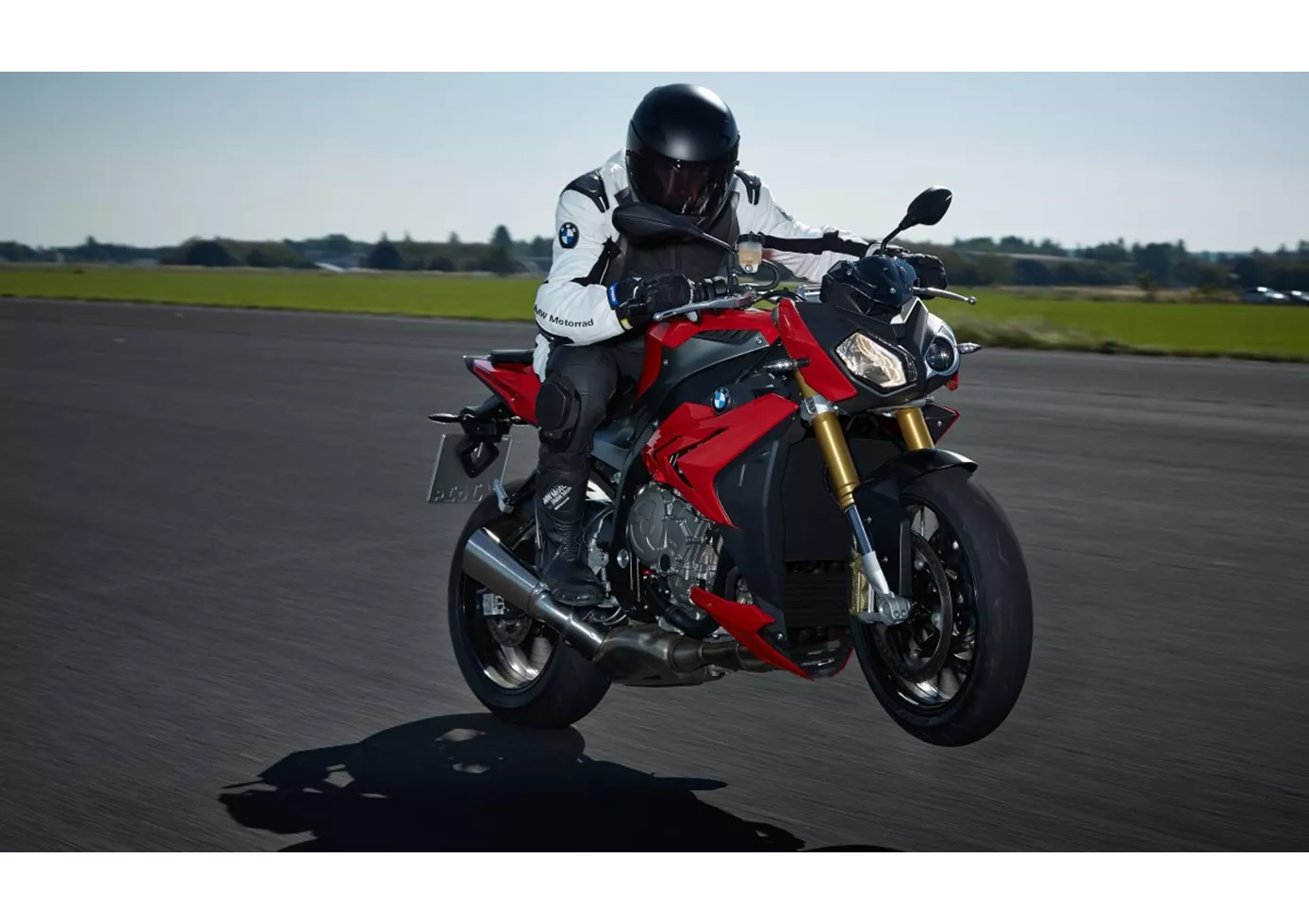
Brutal power, smooth, almost perfect, electronics, it only gets better with the HP4. Now BMW dominates the 1000cc naked bike class after the superbikes.
Price Comparison Avarage Market Price Yamaha MT-10 vs BMW S 1000 R
There are a few key differences between a Yamaha MT-10 2016 and a BMW S 1000 R 2014. In terms of price, the actual average price of a Yamaha MT-10 2016 is about 4% higher. A Yamaha MT-10 2016 experiences a loss of 810 GBP in one year and 1,870 GBP in two years of ownership. This is offset by a loss of 600 GBP and 620 GBP for a BMW S 1000 R 2014. Compared to BMW S 1000 R 2014 there are less Yamaha MT-10 2016 bikes available on the 1000PS.de Marketplace, specifically 7 compared to 19. It takes less time to sell a BMW S 1000 R with 70 days compared to 97 days for the Yamaha MT-10. Since model year 2016 1000PS.de editors have written 32 reviews for the Yamaha MT-10 and 62 reviews for the BMW S 1000 R since model year 2014. The first review for the Yamaha MT-10 was published on 17/11/2015 and now has more than 20,700 views. This compares to more than 17,300 views for the first review on BMW S 1000 R published on 03/11/2013.



